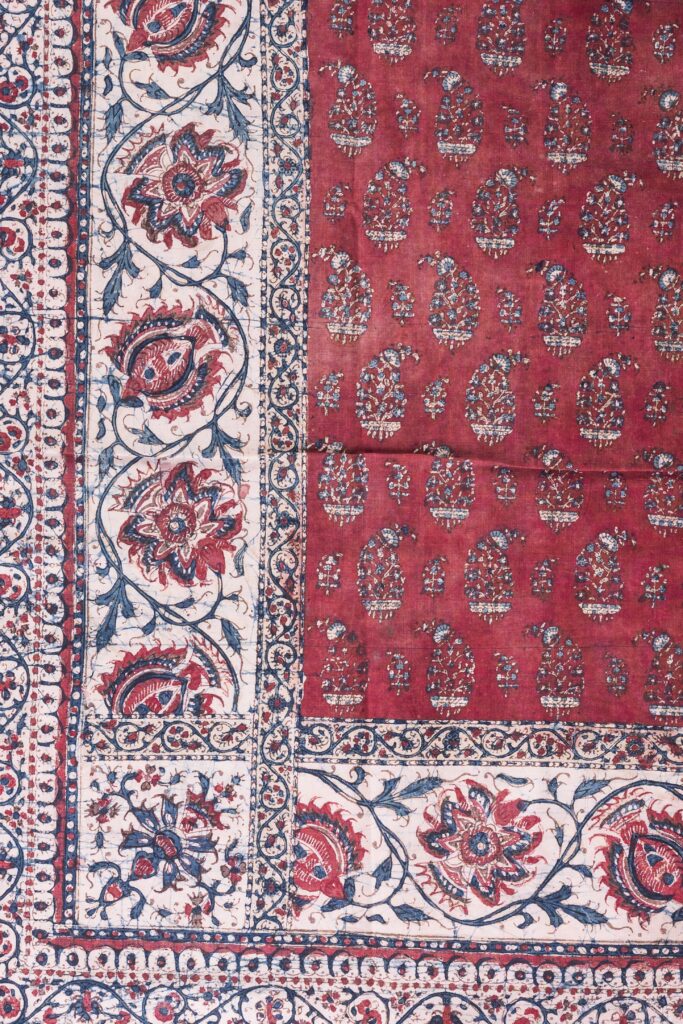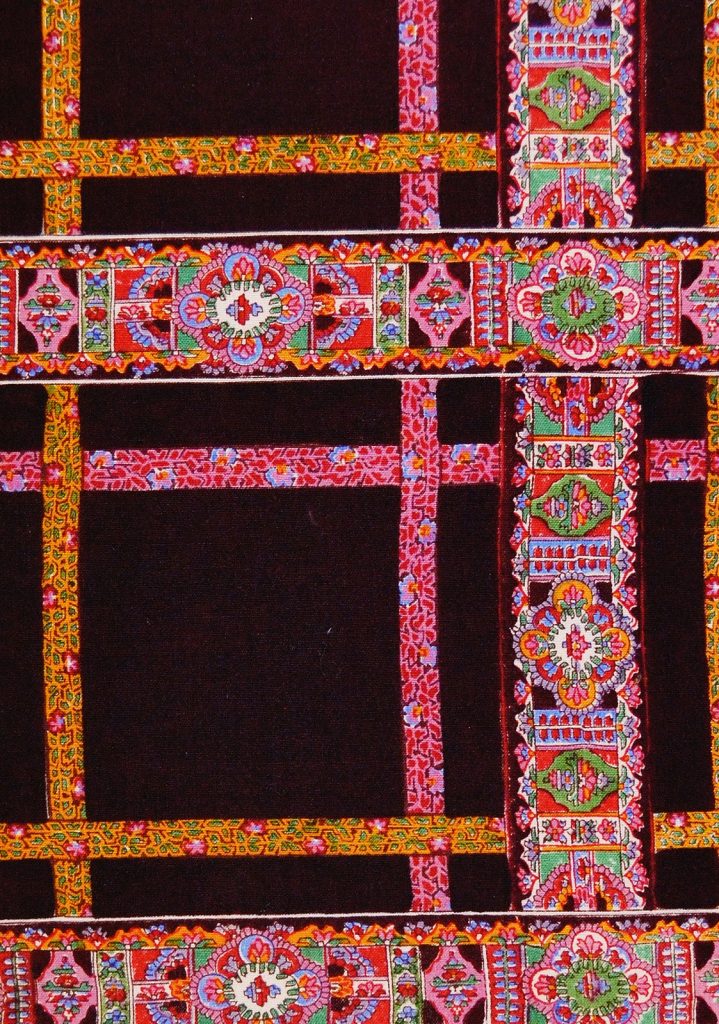Rosebank Mill ‘Dairy Book’ of fabric samples and notes, 1832-1833
Lancashire, Great Britain
3
This book comes from Rosebank Mill in Lancashire and contains samples of mainly dress fabrics. Most of the samples are printed on smooth, evenweave cotton although there is one sample of cotton with a ribbed pile like corduroy. The cover bears the name Thomas Comstive and indicates that the book covers the period “1832 and part of 1833”.
This book is part of a small collection of similar books featuring printed and dyed fabric samples alongside accompanying notes detailing the methods used to produce the samples. They outline the recipes used for the dyes, method of applying the colour and specific details about the treatment of the fabric at each stage of the process. They cover an exciting and highly experimental period of great technological innovation in both printing and dyeing methods, with manufacturers striving to perfect new combinations of pattern and colour in a bid to outdo their competitors.
Books such as these would have been an incredibly valuable record of what methods had been tested. as well as how successful they were. They are an amazing snapshot of the variety of patterns and colours available for use in both garments and household furnishings and also showcase the skill and ingenuity required at every step of the process. From weaving high quality fabrics as a base for the patterns, to designing the print itself and then working out the best combination of printing and dyeing processes to achieve the desired effect – each step of this process required expertise and experience that would have been developed over a lifetime.
















Comments
(2 comments)
Marion Raper
This book is so interesting. I managed to read part of a page which says Black Fly Dung was used in the dying process. I looked this up and found that an oil called lauric acid can be made from black soldier flies and this in turn can make soaps and detergents. How amazing that this was known in 1800s
Dr Gail Baxter
Interesting to see that they are using ‘Log’ as shorthand for Logwood. Logwood (Haematoxylum campechianum) was native to Southern Mexico but was introduced to many Caribbean countries and parts of Central America as its commercial importance was realised. It was imported into Europe in huge quantities for the dyeing industry and was especially important as the base of black dyes.
Leave a comment
You must be logged in to post a comment.